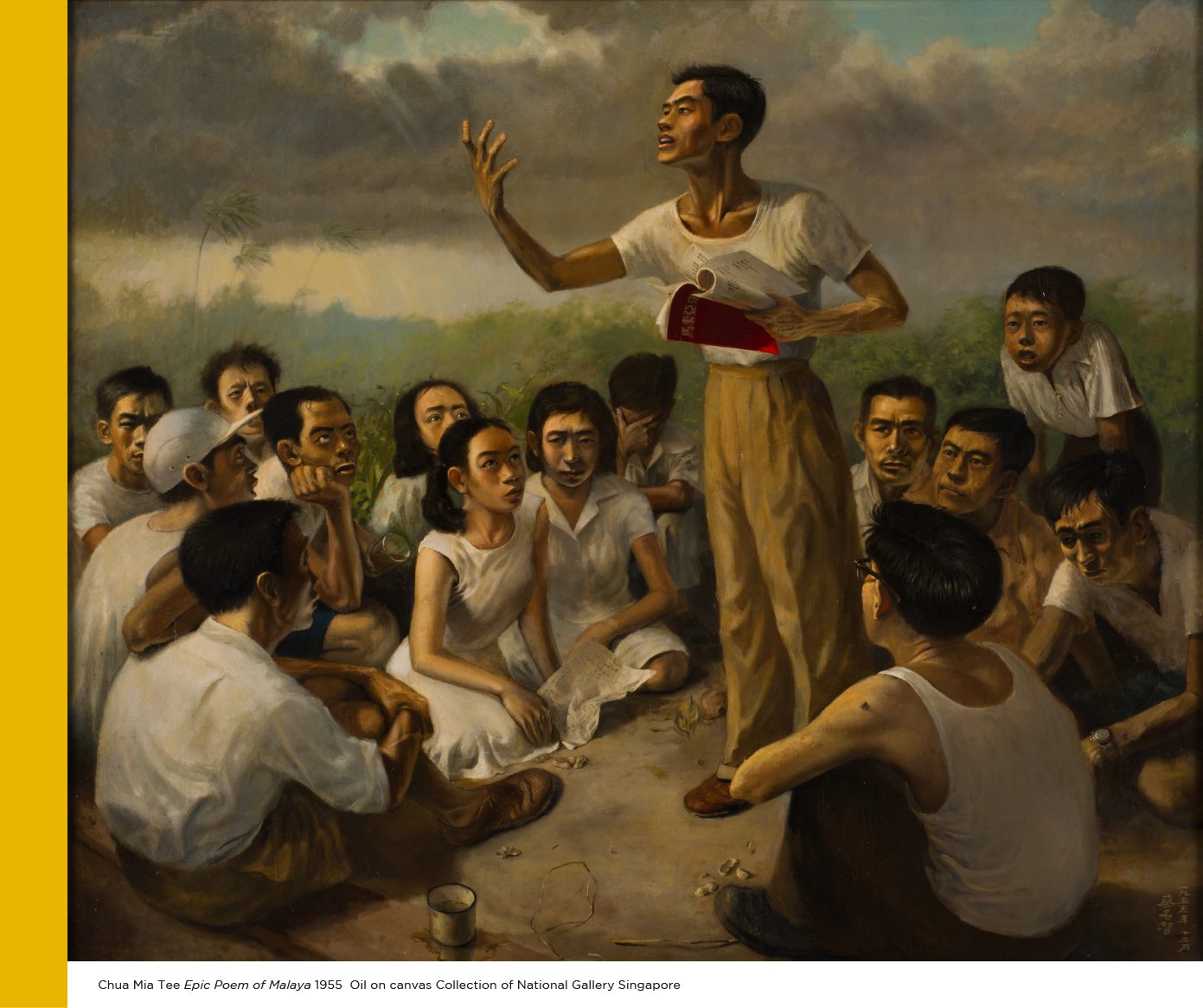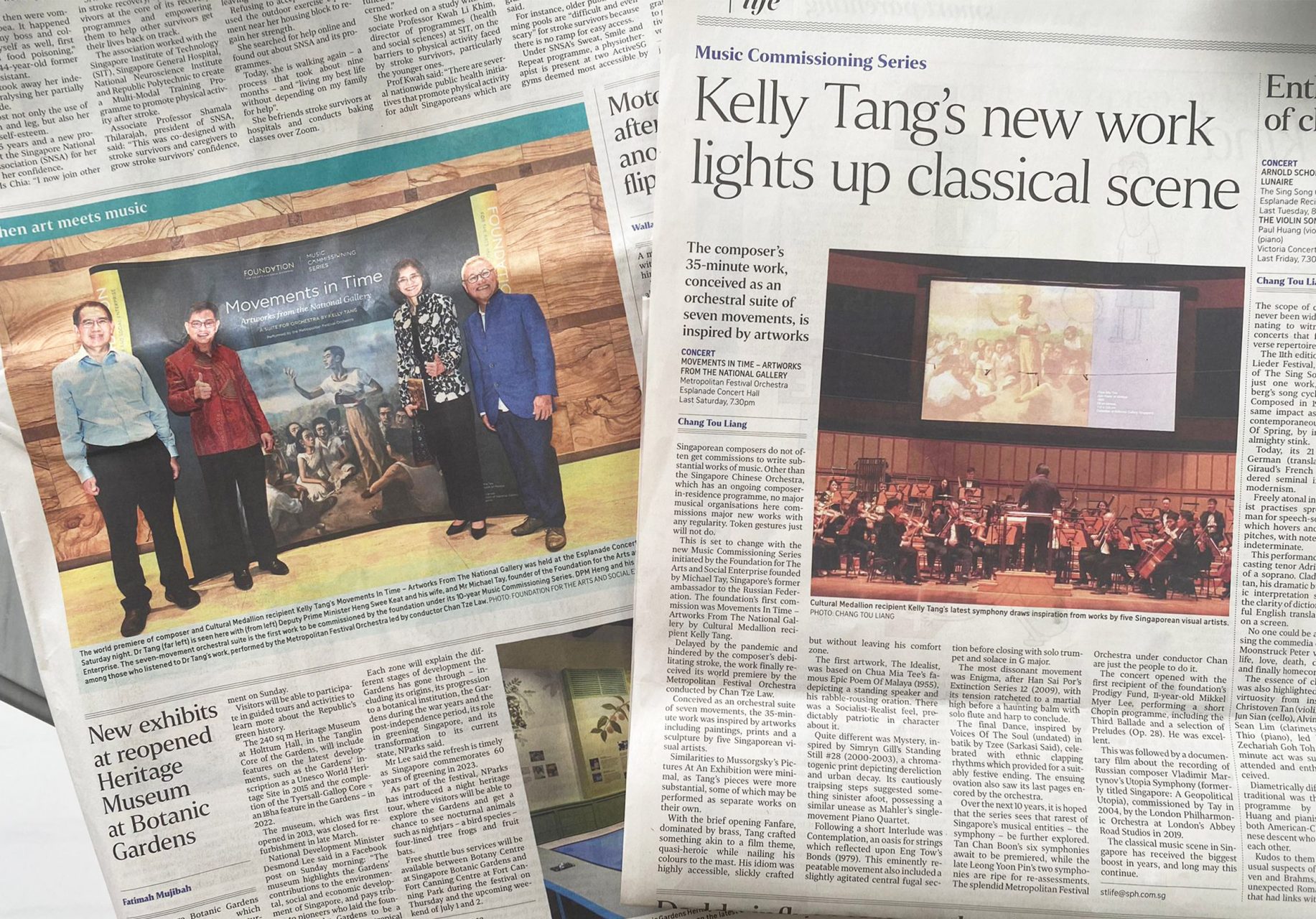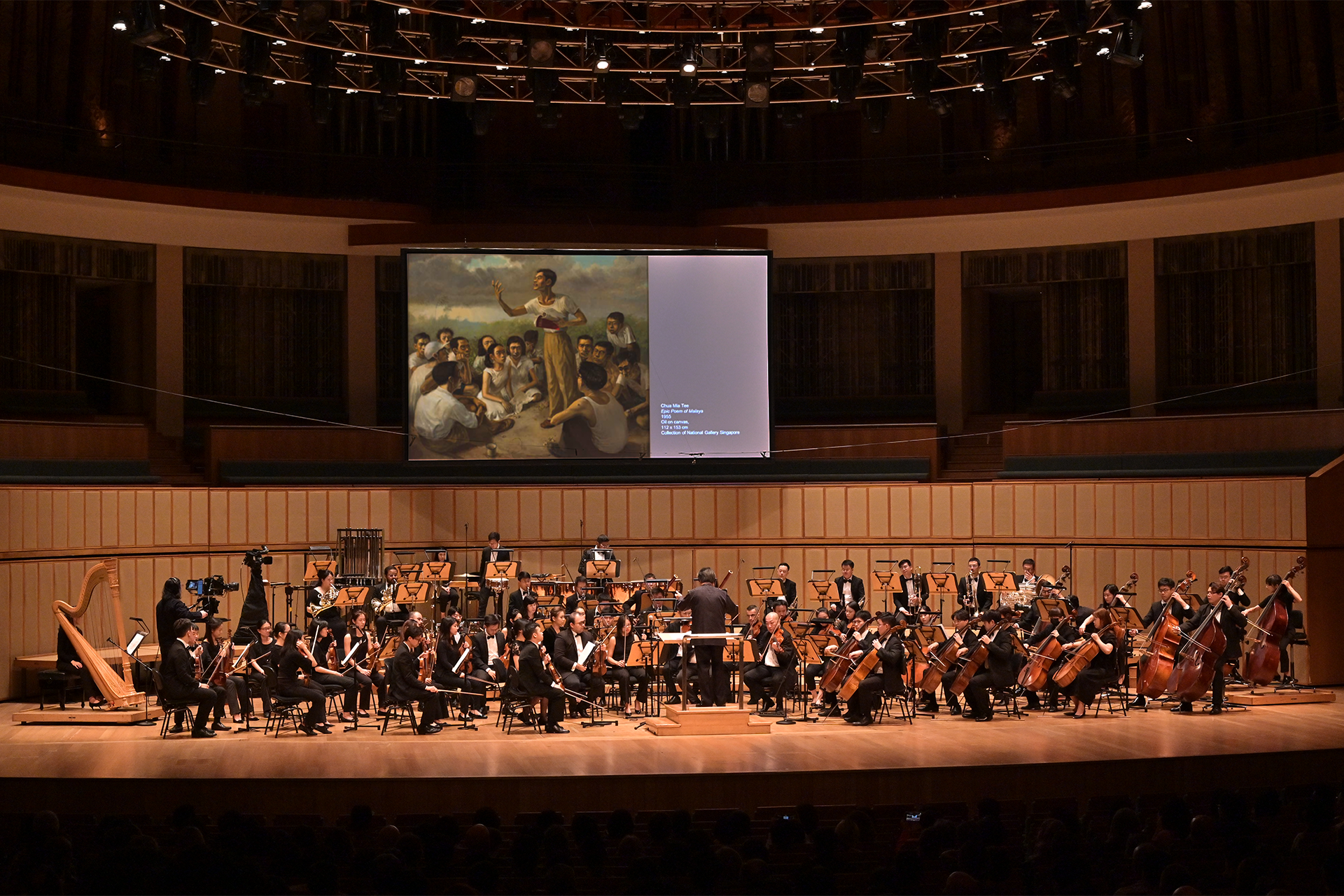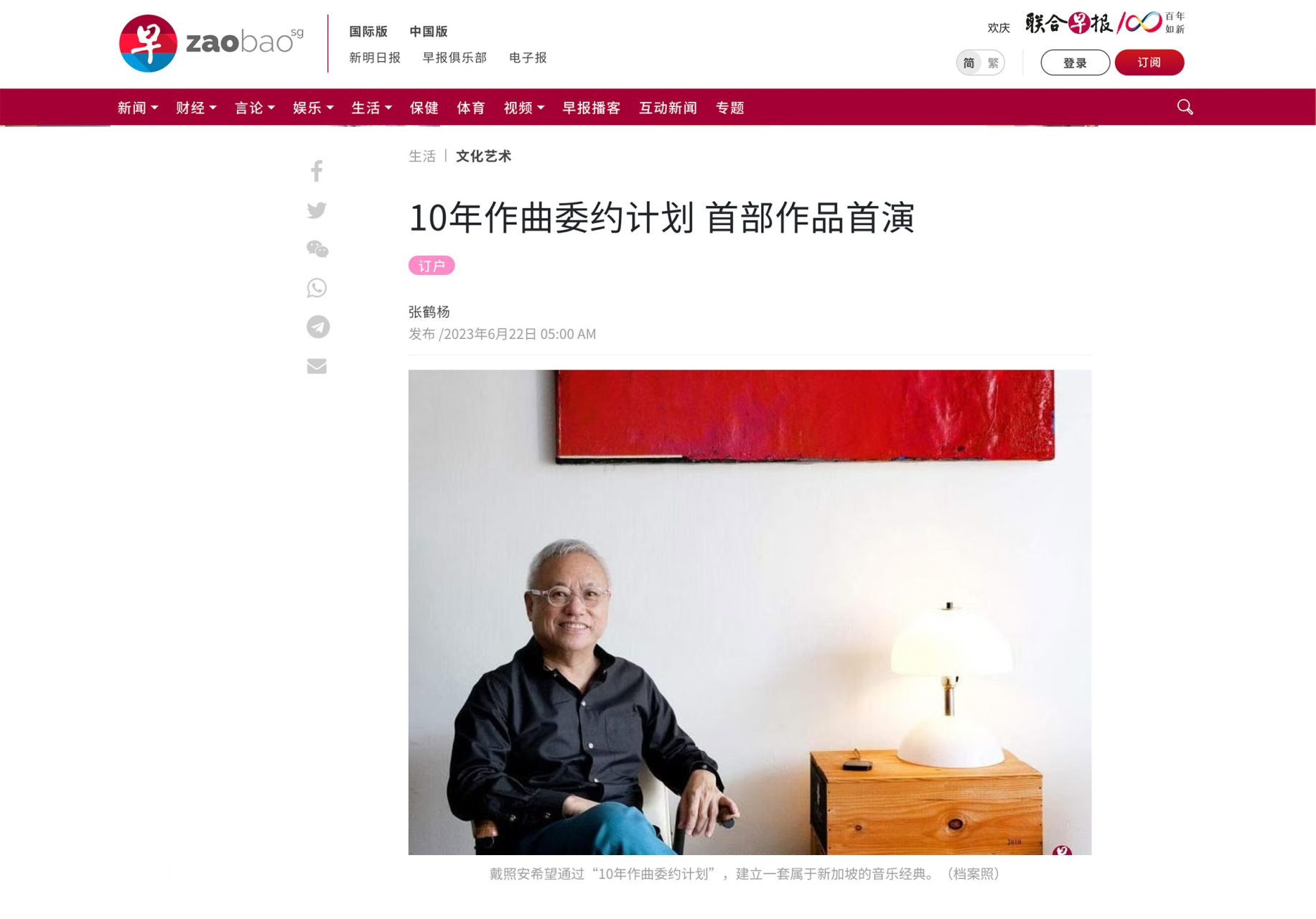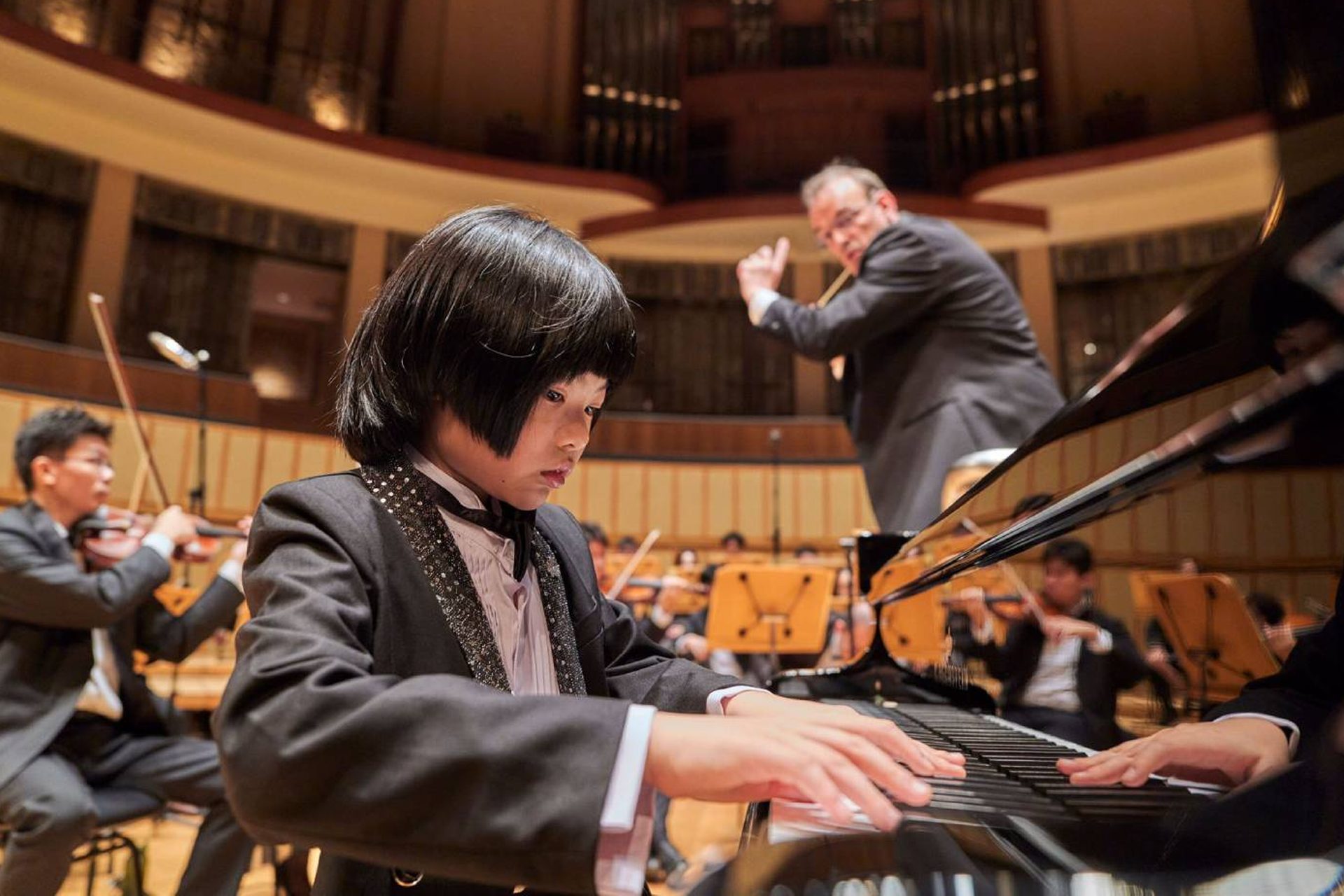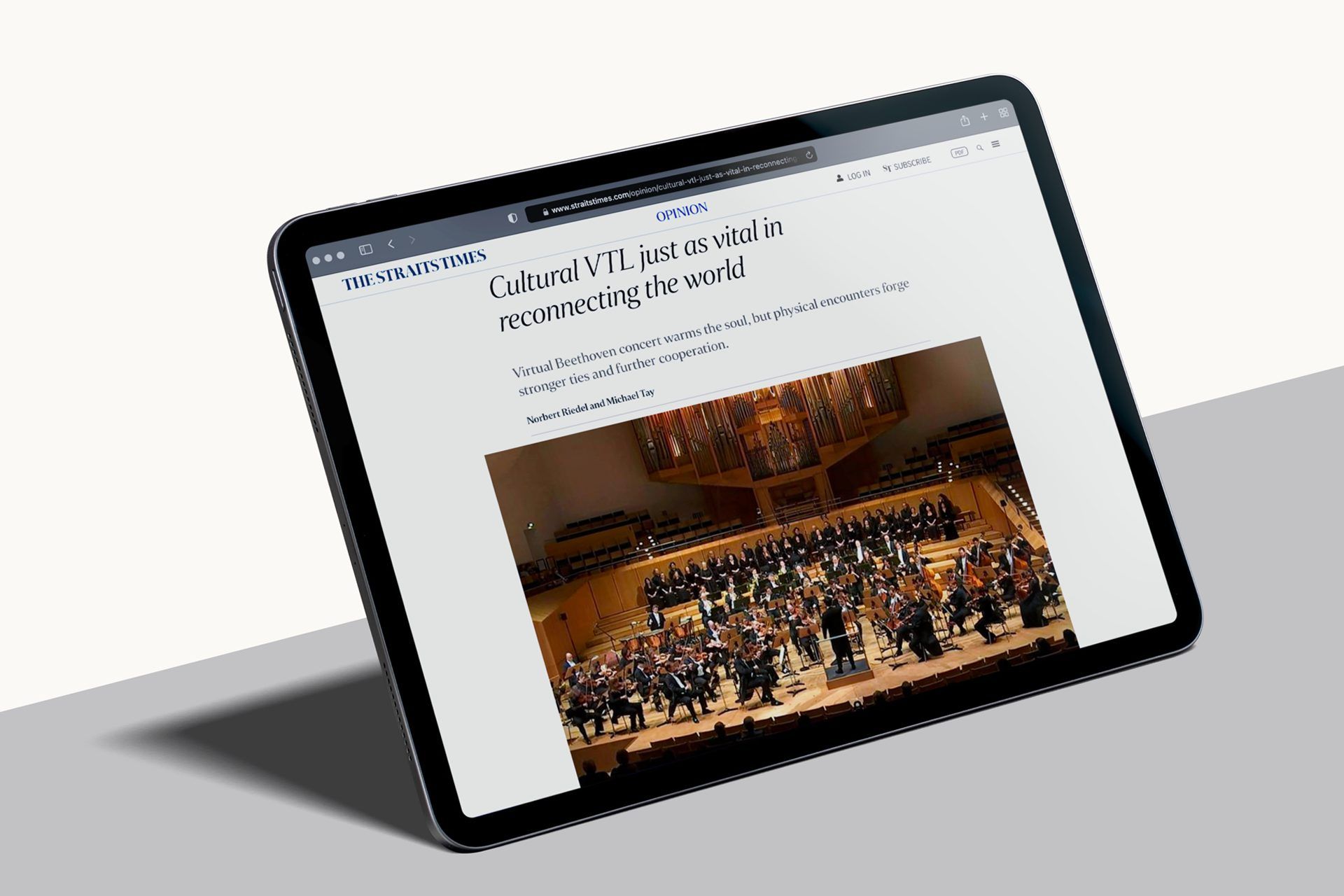The Foundation’s Yaim Chia has a conversation with Kenny Low, the artist who created a multimedia work entitled Utopia, where the centrepiece and source of inspiration is the Buddha Tooth Relic Temple at the edge of Singapore’s Chinatown. Kenny’s work was selected to be the album cover for the Vladimir Martynov-composed symphony of the same name (by coincidence).
Hey Kenny, thank you so much for joining us today. Can you tell us a bit more about Utopia, your multimedia artwork that was used as the album cover of our UTOPIA symphony?
My artwork revolves around mutation. Mutation, because of my love and interest in Japanese culture and the aesthetics and visuals of Japanese art.
I’ve always been quite intrigued by Japanese art, so during my uni days I tried to research and uncover the reasons behind my interest in Japanese design. Something I learnt through this research was that a big part of Japanese culture has to do with what happened in World War II.
To me, it’s very interesting because – how can something so perfect be influenced by something so crazy – there’s a lot of trauma there as well.
I mean, of course, they experienced World War II and the real life mutation, and I think that might be where they get a lot of inspiration also.
So by mutation, you mean literal mutation? As in, the after effects of the war and after effects of Hiroshima?
Yeah. Mutation expressed in a carrot that has many sub-carrots growing out from the same carrot. I mean, as designers we all take influence and visual inspiration from many different places, and create and re-create. I realised what they were doing — in terms of how mutation was appearing in Japanese art — and I tried it in the Singapore context.
I wanted to test what Singapore would look like if I “mutated” Singapore culture.
I took buildings because I love how architectural, structured and graphic buildings look. To me, each building has its own cultural look — I mean, the obvious ones are the temples, the churches. But there are also older buildings – the ones with Peranakan influence, or Chinese influence in Chinatown or elsewhere. Those buildings are innately interesting to me, and I wanted to evolve them into what could be – what might exist in the future, I don’t know. My work is a bit crazy also. I create buildings that are upside down, floating… but who knows, maybe that’s what the future might look like.
So in your process of using these buildings, did you find that you were more interested in certain buildings in Singapore?
I’m mainly interested in two types of buildings — religious or cultural ones, as well as industrial ones. The obvious interest is in the temples. I also love classic church buildings, like the huge cathedral beside Raffles City.
But even our public housing in apartment blocks, HDBs, are interesting. Or pre-built HDBs – when they’re in the process of building the HDB, everything looks very raw and unfinished. And yet there is an order and structure in some sense.
There also is a contrast between those two groups, I assume. Religious buildings look very different from industrial buildings.
So, there are two main elements in Utopia – the buildings in construction, as well as the temple.

There’s something to be said about the thin line between the finished and the unfinished. In Utopia, it’s exactly half: Half the image is of the Buddhist temple, and half of the buildings under construction. I think Utopia could be somewhere in between. With the contrast between the two, I was hoping to evoke a sense that… this contrast can be beautiful when put together.
I love what you’re saying about the finished and unfinished. I feel like in Singapore, there are a lot of old, cultural buildings. But there’s also a lot of construction, right? There’s a lot of renovation, rebuilding. A building gets torn down and built again. There’s this sense of movement, of constant change. And there seems to be tension between this history and this constant reinvention. And I kind of sense that what you’re saying is that perhaps utopia is somewhere in the middle. That it’s both of these things but also none of these things.
Yeah, exactly. I chose unfinished buildings because – when you compare it to HDBs, which are so finished and proper, and temples which obviously are already finished and give people a sense of peace. On the other hand, a building under construction is the total opposite. Utopia is just these two worlds becoming one.
That’s really relevant to what Martynov, the composer of the UTOPIA Symphony, thinks – that Utopia is a state of constant becoming, changing, growing.
Also – was there anything that was particularly difficult about creating this piece? Or on the other hand, was there anything that was particularly easy – I’m sure you’ve experienced this before as an artist, where sometimes things just come to you fully-formed.
The process of my image making is long and painful. That sounds really negative, let’s not include that. (Laughter)
No, but I think it is good to pull back the curtain!
I think saying it was “long” is fine, but maybe not “painful”. Maybe tedious is a better word.
I’m quite curious – where do you normally begin? What’s the first thing you do when you start making an artwork?
So… the process of my art begins with taking photos of buildings.
I’m not very good with my drawing, which is why I use digital art to represent my work. I mean, there’s no one way of doing my art – sometimes I sketch, and after sketching I go for a photoshoot and come back and crop the buildings and experiment.
But I don’t start with a sketch all the time. Sometimes I go straight to the computer and start putting things together. So… yeah, I mean, a lot of artists would start by sketching, coming up with ideas and stuff like that.
I think that’s where my work is a little bit different from other artists in the sense that I don’t actually plan how it will look right from the start. A lot of the time, even when I do plan how I want it to look from the start, it eventually becomes something else. Not because it’s a non-directional thing, but more because… it’s a very evolving and revolving thing. I think it has a lot to do with how I feel about the world also?
In what way?
Well, for one, my sense of design. But sometimes, if I’m not in a very good mood or anything like that, I don’t use art to express my mood, but I do feel like it’s more difficult for me to create. Doing my art takes a lot of effort — as what you said, it’s so chaotic, but things are not just put together in an any-old-how sort of fashion. It’s very precise work — how a building at a certain angle might look like a mountain, or a jellyfish.
I have to crop each building out from the background, making sure that it looks perfect for the finished image. I spend a lot of hours cropping buildings out of images.
That’s kind of interesting, then. Because – when I view your artworks, I get this sense of chaos, or energy. It’s very interesting to hear that the process itself is the opposite of chaotic. Instead, it’s very detail-oriented.
Yes, correct. I don’t just plonk things randomly. (Laughter)
I did an interview three years ago, where I was ranting about how – you know, with digital art sure you can reverse the mistake, but ultimately each image has to be tactically placed.
The whole process can take about a month per artwork. But as you mentioned earlier – sometimes it just comes to you. So I could actually spend the entire first twenty days playing around and not being very satisfied. Then, suddenly, in the last ten days, everything just falls into place and I get very inspired by how it should look, and that’s when I can finish my work.
If not, honestly, how mutation is… my artwork is ever-changing and ever-growing. I mean, I believe that in all art, there’s no right and no wrong. I think that’s where my art is interesting — or where all art is interesting.
Tell us a bit more about the series of artworks that Utopia is a part of.
When I finished Utopia, it was part of a series called – I think it was called A New World. So, ‘utopia’ is also something that I want to create in a new world. Within the series, I had this power-ranger looking, zoid-like work representing Christian architecture, and another artwork representing the temples.

And Utopia is the world where these two … heroes co-exist. Utopia is the world where these two heroes live.
But all this is a world that I’ve created in my head, after watching a lot of anime, reading a lot of manga, where they also create their own world and their own characters. Utopia is part of an environment for my other characters to live in.
So in some sense, Utopia and your artworks are a manifestation of this world you’ve created in your head.
Mhmm. So, after A New World, which is the series with Utopia, I created Genesis. Genesis was also about creating another new world. It’s like how – it’s like human nature, right? If this is done, then what’s the next thing? In all environments and all stages of living, there are these questions – after death, what happens? A new world arises.



